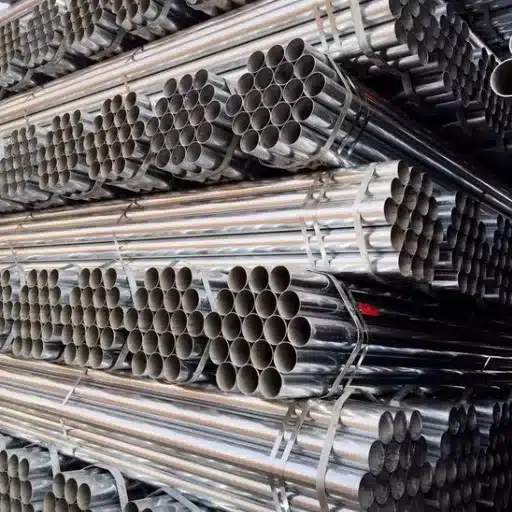From water treatment to food processing, filtration systems are paramount for maintaining operational integrity across industries, including pharmaceuticals and manufacturing. While there is ample focus on the filter media, the impact of filter housing selection is often overlooked yet equally critical to system performance. What are the consequences of right— or wrong— filter housing selection to filtration efficiency? What implications does it have on optimal flow rates? Such questions are fundamental for enhancing system reliability, reducing maintenance requirements, and meeting challenging industrial or environmental compliance standards. During this guide, we will delve into harmonizing the design of external components, such as filter housing, and their impact functions while outlining critical criteria that lead to knowledge-based choices. In this regard, prepare to discover valuable information on how this component, often neglected, can drastically augment your filtration system performance.
What types of filter housings are available for different filtration needs?
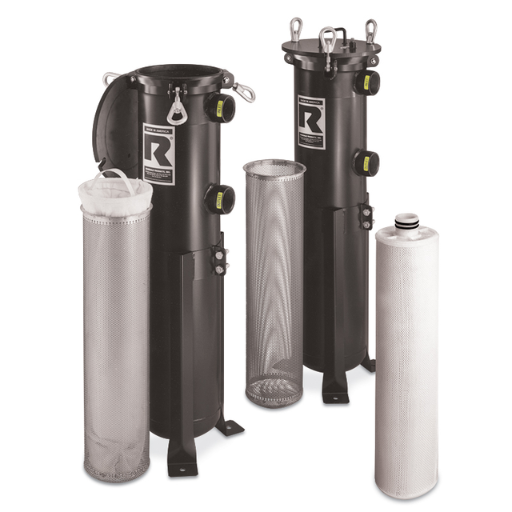
There are several types of filter housings designed to accommodate various filtration needs:
- Bag Filter Housings – These are ideal for high-flow applications and are commonly used in industrial settings to remove large particles from liquids.
- Cartridge Filter Housings – Designed for precision filtration, these housings are used in applications requiring fine particulate removal, such as water purification or pharmaceutical production.
- Self-Cleaning Filter Housings – These are suitable for continuous processes, featuring automated cleaning mechanisms to minimize downtime and maintenance.
- Multi-Cartridge Filter Housings – Used in large-scale operations, these housings facilitate high-capacity filtration by holding multiple cartridges to handle extensive flow rates.
- Industrial Strainer Housings – Typically employed for coarse filtration, these housings protect equipment by filtering debris from liquids or gases in pipelines.
Each type is selected based on flow rate, particle size, operating pressure, and application-specific requirements.
Comparing bag filter housings, cartridge filters, and air filter options
Filter bag housings, cartridge filters, and air filters must be evaluated in the context of a particular application to ensure that all unique filtration system requirements are correctly optimized and achieved.
Due to their economic efficiency concerning cost-per-filter, Bag Filter Housings are commonly used for large-volume industrial and commercial operations. They excel in removing solid contaminants from liquids and are best suited for high-flow rate operations. These advanced bag filters can achieve absolute particle filtration of 1 micron, making them ideal for operations that include the refinement of paint and oils and in food processing where minimal contamination is critical.
Cartridge Filters, in contrast, are known for their accuracy infiltration. When combined with the right filter media, they can filter contaminants as small as 0.1 microns, which can be used for pharmaceutical, water purification, and semiconductor manufacturing. Their modern counterparts also be helpful for high-pressure applications, withstanding up to 100 psi pressure drop while improving efficiency for applications requiring constant high-pressure filtration.
Air filters improve the quality and airflow of the air circulating in a given environment by eliminating airborne contaminants, dust, pollen, and even bacteria. HEPA or High-Efficiency Particulate Air filters are widely used to retain air quality within cleanrooms, HVAC systems, and automotive cabins, as they can capture particles up to 99.97 percent, provided they are 0.3 microns or larger. Traditional air filters have been replaced with electrostatic ones due to recent innovations in air filtration technology, making them more energy efficient and lengthening their lifespan.
Every air filtration solution provides unique advantages tailored to specific needs. For example, bag filter housings are tailored toward high-volume operations and cartridge filters are used when precision is essential. Airborne particulates and system cleansing alongside integrity-favorited air filters aid in creating clean environments. Thorough evaluations of pressurized particles, operating pressures, and environmental standards must be performed if specific performance outcomes are desired, which directly impact selection decisions.
Single bag filter housing vs. multi-bag filter housings: Which is right for you?
When deciding whether to use single-bag filter units or multi-bag filter units, it’s important to evaluate the operational needs, system volume, and maintenance aspects.
Compact single-bag filter housings are less expensive, which makes them ideal for applications with low to moderate flow rates or low-volume needs, such as smaller operations. Single-bag filters are easier to work with, given that their size makes installation and maintenance less complicated, which cuts down operational delay when changing bags. They are particularly effective in applications with limited space… However, because they can only hold one bag, these filters would not be appropriate for high-flow continuous filtration processes.
The multi-bag filter housings, in contrast, are designed to accommodate much higher flow rates, often above 500 GPM, and provide additional filtration capacity by having several filter bags. They are more efficient in volume industrial operations like water treatment plants, chemical processing facilities, and bulk fluid handling systems. Furthermore, due to the improved filtration workload distributed among numerous bags, the extended runtime before maintenance improves system productivity. However, These multi-bag systems may have higher upfront expenses and require additional footprint, making them more appropriate for operational-intensive and infrastructure-rich facilities.
Ultimately, the choice between single and multi-bag filter housings must be made with a thorough analysis of operational capabilities, flow rate, maintenance cycles, and available real estate. This way, precision achieves application performance and cost objectives.
Stainless steel filter housings: Benefits for industrial filtration applications
The selection of stainless steel for industrial applications is based on its mechanical strength, corrosion resistance, and the cost of maintenance and repair. Stainless steel filter housings have become a standard in the market because they cope well with the region’s operational requirements. From the point of mechanical properties, the material is rated for both impact resistance and tensile strength, which is critical for withstanding pressure and pulling forces at work. Due to its versatility and resistance to oxidation and chemical deterioration, stainless steel has gained popularity in industrial filter systems to reduce associated long-term maintenance costs and downtimes.
The 304 and 316 grades of stainless steel are particularly recognized for enduring processing with aggressive chemicals while maintaining exposure within high-moisture environments. Furthermore, stainless steel filter housings are suitable for numerous types of filter media. This increases their relevance for diverse branches of industry, from food and beverage to pharmaceuticals and petrochemicals, among others. Having coarse particulate filters to polymeric fine membrane filters broadens the scope of the compatible filter media. Lastly, the stainless steel’s durability ensures reliable performance in extreme weather and retains time-proof operational efficiency while withstanding harsh working conditions. Another distinct advantage is their compliance with strict industry standards, including FDA and ASME certifications, which is critical for applications requiring hygienic and contaminant-free processing. Furthermore, the possibility of recycling stainless steel is aligned with sustainability goals, which offer eco-friendly solutions for companies seeking to minimize their environmental impact. In general, stainless steel filter housings’ effectiveness and economic dependability apply to many intricate filtration processes.
How does filter housing size affect filtration efficiency and flow rate?
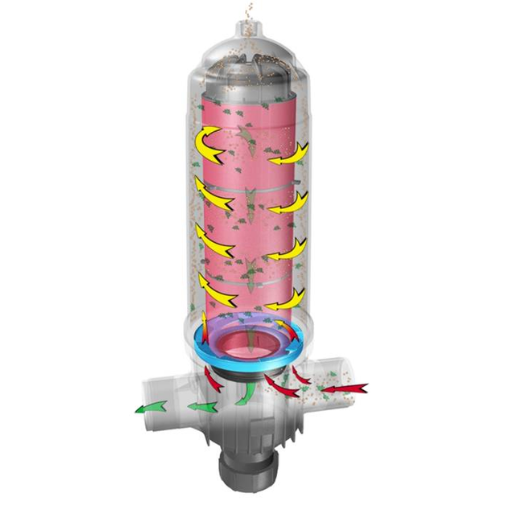
The dimensions of the filter housing have a direct impact on efficiency and flow rate. Increased size in filter housing permits more excellent flow rates and more significant filter components, improving operational capacity and increasing maintenance time. This also helps reduce the likelihood of clogging and ensures consistent filtration. More miniature filter housings can limit flow rate, lead to clogging, and require more frequent element changes. These must be changed more often to maintain efficient flow and clog-free operation. Choosing the correct housing dimensions aids in achieving efficient filtration performance alongside the desired flow rate for the system.
Understanding the relationship between housing size and optimal filtration performance
The interaction between the efficiency of filtration and the housing size contains multiple dimensions like flow rate, the speed of filtration, pressure drop, and contaminant-holding capacity for used and dirty filters. Correctly dimensioned filter housings help keep energy expenditures to a minimum while still preventing the need for extra work on pump systems and other components. An overly small housing also has its consequences, causing an increase in the pressure drop, which decreases efficiency and can damage sensitive equipment downstream. Conversely, undersized housings result in media bypass and idle use, increasing costs without tangible performance improvement.
That systems with correctly sized filter housing achieve energy efficiency gains of up to 30% while maintaining the same level of particulate removal. For example, in industrial sectors like chemical and food production, housing that meets the flow rate criteria filters the contaminants without limiting production volume. Also, improvements from multi-layered filtration technology have shown tangible enhancements in the length of operational cycles, maintenance time, and system longevity.
Grasping these interdependencies relative to filtration technology performance metrics empowers engineers and plant operators to configure system designs for efficiency and operational expenditure optimization under demanding operating conditions.
How to match filter housing size with your specific filtration requirements
Optimum performance and efficiency during cost expenditure require careful analysis of many key factors that need to be evaluated while selecting the appropriate-sized filter housing for your particular filtration needs. To begin with, establish the flow rate required for your system in gallons per minute (GPM) or liters per minute (LPM). Undersized filter housings can cause component pressure drops and excessive stress on system parts, while oversized filter housings can lead to inefficiency in resource utilization. Both scenarios result in ineffective operational efficiency.
Particle contaminants present in process fluid are another key aspect that needs to be considered. Systems with higher contamination levels typically require larger thread and filter housing sizes to accommodate higher dirt-holding capacity and prolong filter element service life. Additionally, the operating pressure and temperature must conform to the specifications of the housing material to guarantee safe and structurally sound operation during the whole working cycle. For instance, high-pressure, high-temperature systems can use stainless steel housings, while their lightweight, low-temperature counterparts can use polymers.
Finally, consider the type of filter media being used. The performance characteristics of any filter media, such as its micron rating and texture, affect its housing’s compatibility and suitability. Coordinating these variables reduces unnecessary burden on the filtration system and increases flow simultaneously. Facility managers can accurately align filter housing dimensions to application requirements, thus enhancing overall system reliability and performance by calculating industry norms and checking manufacturer guidelines.
The impact of oversized or undersized filter housings on operational efficiency
The housing dimensions of filters impact the efficiency of the filtration system as well as the operational life of the system. If filter housings are too large, operational inefficiency will occur due to excessive fluid volume, causing redundant flow, increased turbulence, and poor flow distribution. Additionally, oversized filter housings create conditions requiring increased energy consumption from the pumps as the systems try to maintain desired flow rates. On the other hand, undersized filter housings create pressure bottlenecks that passively increase the fluid’s velocity while lowering pressure drop across the filter. This blockage can increase how quickly filter media gets clogged, shorten the lifespan of the filtration system, and degrade the fluid quality from insufficient contaminant removal.
Undersized filter housings significantly increase the overall energy expenditure of pump systems by 20% to 30% due to higher differential pressures, requiring increased effort to pump fluid through the system. Moreover, system inefficiencies associated with improperly sized filter housings, either oversized or undersized, have led to a 15% increased maintenance expenditure due to elevated component wear and performance degradation. Filter housings must be precisely tailored to the flow rate, viscosity, and expected contaminant load to eliminate these inefficiencies, ensuring improved reliability at lower operational costs.
What factors should be considered when choosing the proper bag filter housing?
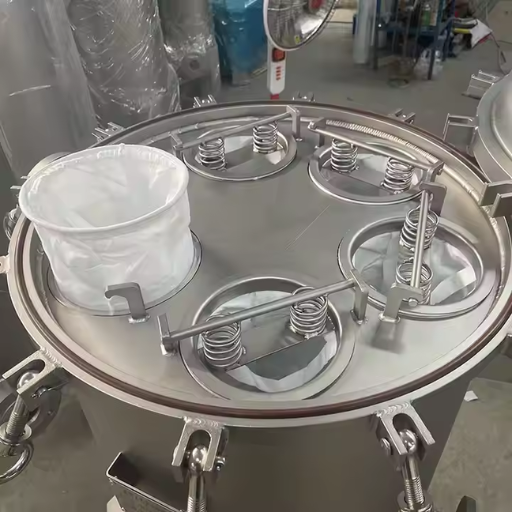
When choosing the proper bag filter housing, several critical factors should be evaluated:
- Flow Rate Requirements: Ensure the housing can handle the system’s maximum flow rate without compromising performance.
- Filtration Efficiency: Select a housing that supports the desired filtration level to remove contaminants effectively.
- Material Compatibility: Choose materials that can withstand the chemical and temperature conditions of the process fluid.
- Contaminant Load: Assess the expected contaminant levels to determine the appropriate bag size and housing capacity.
- Ease of Maintenance: Opt for housings designed for convenient filter bag replacement and minimal downtime.
- Certifications and Compliance: Verify that the housing meets relevant industry standards or certifications for your application.
The correct bag filter housing can ensure optimal performance and operational efficiency by systematically addressing these considerations.
Material compatibility: Selecting the appropriate filter bag material for your application
Choosing the correct filter bag material is critical to achieving effective filtration and ensuring the longevity of your system. The selection process must account for factors such as chemical resistance, temperature tolerance, filtration efficiency, and the specific characteristics of the filtered fluid. Below are key material options and their associated properties:
- Polypropylene (PP): Known for its excellent chemical resistance, polypropylene is suitable for filtering oils, acids, and bases. It can operate effectively at temperatures up to 180°F (82°C). This material is an economical and versatile choice for various industrial applications.
- Polyester (PE): Polyester offers superior strength and durability, making it resistant to abrasion and high temperatures, up to 300°F (149°C) in dry conditions. Its compatibility with various organic solvents and hydrocarbons makes it ideal for industrial coatings and petrochemical processes.
- Nylon (Polyamide): With high tensile strength and excellent abrasion resistance, nylon is especially suitable for applications with significant mechanical stress. Additionally, it is good at resisting alkalis but limited at coping with strong acids.
- PTFE (Polytetrafluoroethylene): PTFE is highly resistant to almost all chemicals and supports extreme temperatures, up to 500°F (260°C). Its non-stick surface and durability make it optimal for demanding filtration tasks, particularly in pharmaceutical or chemical processing environments.
- Nomex (Aramid): Commonly used in high-temperature applications, Nomex can operate effectively at temperatures up to 400°F (204°C). It offers good resistance to abrasion and chemical degradation, making it suitable for industries such as metalworking or high-temperature coatings.
When selecting a material, it is also essential to consider the particle size distribution of the process fluid. Micron ratings commonly range from 1 to 200 microns, and the material’s woven or nonwoven structure will influence the overall filtration efficiency and flow rate.
By carefully evaluating these material properties in the context of your operational parameters, you can optimize system performance while minimizing maintenance costs and downtime. Leveraging advancements in material science further enables precision in matching material compatibility with complex industrial requirements.
Flow Rate Considerations and How They Influence Housing Selection
The flow rate is one of the most important factors determining system filtration for filtration systems. The specific application needs, such as fluid volume and pressure limits, directly influence the required flow rate. When associated flow rates are achieved, there are no system constraints, process efficiency is achieved, and system performance is stable.
The material used in constructing the filter flow rate depends on the dynamic abuse, which the structure has to tolerate without damaging the support characteristics. Stainless steel or reinforced polymers would serve well when the flow is higher and significantly greater than the pressure margin. Moreover, the housing features also determine turbulence and pressure drops. For example, streamlined internal pathways find application and conserve system efficiency at nominal flow rates.
Operational inefficiency resulted from inadequate matching of the filter housing to its intended flow rate, which resulted in uneven energy-efficient filtration. Multi-element or modular systems are designed for high-flow systems in the thousands of gallons per minute range to offer scalability without compromising uniform pressure distribution. The advancement of computational flow dynamics led to the accurate prediction of the flow behavior and dynamics within housing systems, enabling further development of bespoke configurations that keep pace with modern industrial workflows.
Using cutting-edge technologies and precise flow rate requirements, industries can achieve a higher level of filtration and reduce operational downtime.
Required levels of filtration and how housing design affects filter media performance
Achieving the necessary levels of filtration in an industry or business is conditioned by factors like the nature of the particulate matter, properties of the fluid involved, and operational requirements. MERV (Minimum Efficiency Reporting Value) and HEPA (High-Efficiency Particulate Air) filters have their own assigned benchmarks of filtration efficiency, which are prerequisites based on the application. For example, HEPA filters are required to achieve a bare minimum of 99.97 percent efficiency for 0.3-micron particles to sustain strict air quality control in the pharmaceutical and semiconductor industries.
To support these filtration standards, the housing design must adequately interact with the incoming flow and the filter. Inefficiently designed housings are prone to uneven pressure distribution, bypassing, and inconsistent particulate capture. As an illustration, one study showed that streamlined housing geometry enhances static contact over the filter media, reducing turbulence and aiding even contact, which improves filtration efficiency without increasing resistance to flow by up to 15% during controlled tests. Modular, easy-to-maintain housing also enables quick filter media changes, reducing downtime and aiding sustained system performance.
With careful design and responsiveness to industry needs, filter housing systems can be uniquely configured to fully exploit the filter media’s performance capabilities while ensuring compliance with the required filtration standards.
How do different housing designs impact overall filtration system performance?
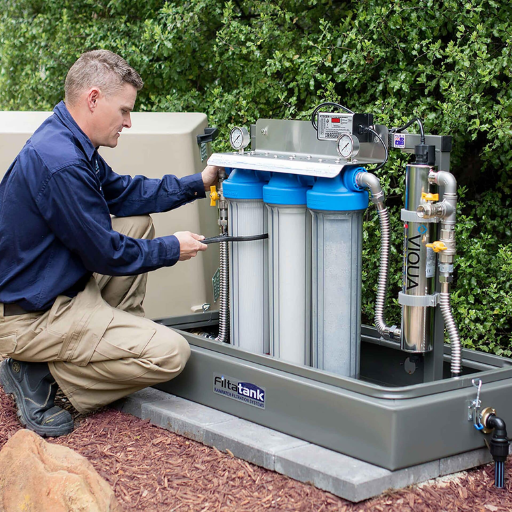
The maintenance requirements of the system, as well as its efficiency, depend on the flow consistency of the system. Efficiency can influence maintenance and system efficiency, too. Regarding engineered housing, pressure drops are lower; therefore, the flow rate is steady. In turn, the effectiveness of filtration is improved. Filters that are designed to bypass proper sealing mechanisms are designed right. All fluid or all air will flow through the filter media without skipping it. Simple filter replacement is made possible with easy-access or modular housings. This improves system operation by reducing downtime. Prolonged, consistent operation of the system can be achieved as well. Ultimately, optimal filtration performance can only be achieved by selecting housing tailored to specific operational demands.
Design features that prevent leaks and improve filtration efficiency
- High-Quality Gasket Materials
Gaskets made from strong materials resistant to heat and chemicals during extreme operating conditions ensure a tight seal. Silicone and nitrile rubber gaskets, which can be used from -40°F to 400°F, can mitigate extreme conditions and overheating. Apart from overbearing heat, these materials can resist oils, solvents, and contaminants.
- Precision-Machined Sealing Surfaces
Housing parts with precision-machined sealing interfaces have no gaps or irregularities that may cause leaking. Filter elements and the housing need to be in exact alignment, which is accomplished by tightening the tolerances to ±0.01 mm. These tolerances are pretty standard in high-performance systems.
- Innovative Compression Mechanisms
Adding spring-loaded or threaded elements maintains compression on filter components, ensuring the filter is seated correctly and preventing bypass in systems with oscillating pressure. Most designs are reported to compress leakage values by as much as 95% compared to non-compression-sealed leakage alternatives. These designs have always been reported to perform better in terms of compression testing data.
- Dual-O-Ring Sealing Systems
The configuration with Dual O rings provides extra measures for leak mitigation. This configuration minimizes bypass around the filtration media by having two separate sealing surfaces, thus creating two separate points of contact. Laboratory simulations demonstrate that dual O rings can mitigate up to 60% of failure risks in high vibration and pressure spikes.
- Reinforced Filter Housing Materials
Utilizing corrosion-resistant metals or high-grade polymers for the filter housing enhances its strength and ability to seal leaks. For instance, stainless steel is known to resist stress cracks and environmental corrosion, preserving system integrity even in the presence of aggressive chemicals for prolonged periods.
- Integrated Leak Detection Channels
Intelligent leak detection systems housing advanced design have incorporated channels that lead to fluid escaping to visible areas or sensors mid-regions, which allows accessible monitoring for early fault identification. Various industry reports state this feature reduces maintenance work during unplanned servicing events by up to 20 percent.
- Vibration Dampening Features
In the filtration systems used with heavy machinery, vibration-dampening mounts or materials are frequently integrated into housings and other structural components. These features limit stresses and minimize mechanical slippage that causes leaks in dynamic systems.
In addition to combining these design features, the filtration systems can be designed for optimum filtration efficiency and dependable reliability. Adhering to these principles during the design and selection phases results in streamlined operations, minimization of downtime, and increased service life of the critical systems.
How housing design affects filter replacement and bag changes
The efficiency with which maintenance can be performed and the operational downtime of the systems are directly linked to how easy filter replacements and bag changes are, which are primarily determined by the filter housing design. Modern filter housings are constructed to allow easier handling during servicing; for example, they have quick-release clamps, hinged covers, and ergonomic access points. Such housing design greatly streamlines replacing and accessing filter elements, allowing non-stop system functioning.
Moreover, some advanced housings use visual indicators and digital monitoring systems to tell the operators when a filter bag needs to be replaced, eliminating manual inspections. Housing designs with a sealed or enclosed system also contain and replace contaminants during the replacement process, improving safety while reducing risk and exposure to dangerous materials. Good housing design goes beyond improving convenience and safety; it also affects cost by reducing the amount of labor needed alongside increasing equipment lifespan by enabling precise servicing, thus streamlined servicing becomes possible.
The importance of proper sealing between filter elements and housing
Sealing filters properly with their components is crucial in providing efficiency, effectiveness, and trouble-free operation in a safety filtration system. If the seal is broken, air, liquids, or any other medium can bypass filtration, which results in contamination that degrades system efficiency. It has been established that minimal leakage, even at a tiny scale, can significantly diminish the operational effectiveness of a system. It is believed that at least 30% of contaminants can avoid filtration and increase the deterioration of downstream components. New sealing technologies offer excellent reliability, such as elastomer seals and precision molded gaskets that can resist high pressure, temperature, and chemicals. These new designers further aid seal performance misalignment prevention during installation with locking features and uniform compression zone design that control compression during sealing, further protecting the interface from deformation during shutdown periods. Regular inspection and maintenance of the sealing elements and their surroundings is vital to optimize performance and avoid costly downtimes.
What maintenance is required to ensure filter housings work optimally?
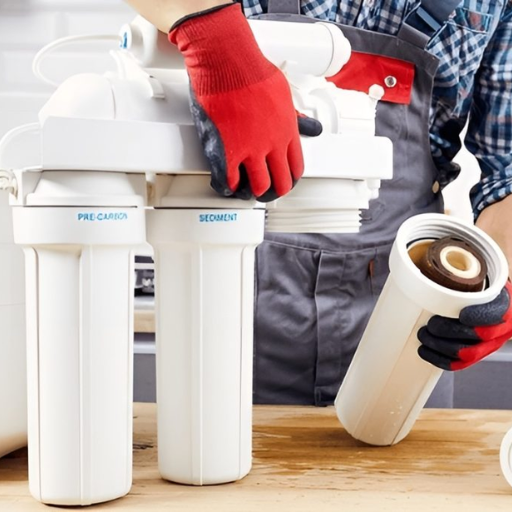
Regular maintenance is crucial to ensure filter housings work optimally. Key practices include:
- Periodic Cleaning: Remove any accumulated debris or contamination from the housing to prevent blockages or reduced efficiency.
- Inspect Seals and Gaskets: Check for wear, cracks, or deterioration that could compromise the seal and replace if necessary.
- Check Connections: Ensure all fittings and connections are secure and leak-free.
- Replace Filters as Needed: Follow the manufacturer’s recommended schedule for filter replacement, or replace sooner if performance issues arise.
- Monitor Pressure Levels: Observe pressure differentials, as significant changes can indicate a clogged filter or other issues requiring attention.
Adhering to these maintenance steps ensures consistent functionality and prolongs the lifespan of the filter housing.
Cleaning and maintenance schedules to prevent reduced filtration efficiency
Establishing a strong cleaning and maintenance schedule is crucial to achieving the best performance from filtration systems. Under routine operational conditions, industry standards suggest checking the filter housing and media every 3 to 6 months. A facility that processes large volumes of particulate matter may need to conduct these checks monthly for optimal efficiency.
For specific filtration systems, backwashing, where applicable, can significantly improve the system’s lifespan. In contaminated environments, data suggests that filters often experience a flow rate drop of 15-30% before maintenance; this indicates that cleaning schedules implemented require modification. Recording operational metrics like flow rate and pressure differentials helps ensure obstructions will be identified early.
Cleaning schedules should also consider water quality parameters, the surrounding environment, and usage patterns. For example, systems with high turbidity should extract microparticles, preferably weekly or bi-weekly. Regular checks for signs of wear or damage allow for improved identification of the parts that, if neglected, would decrease the system’s overall efficiency.
Signs your filter housing needs servicing or replacement
To ensure the most efficient overall system performance and filtration, it is critical to detect problems in filter housing early and perform routine maintenance within designated time intervals set by the manufacturer. Some of the more telling signs of servicing or replacement include visible gaps and fractures within the structural frame of the filter housing and its surrounding parts, as this may compromise pressure containment and lead to a full-blown leak and other pressure-related features. A Very Important Issue, corrosion, mainly occurring in metal housings, poses a significant risk by contaminating the filtration system, weakening structural integrity, and introducing numerous unaccounted-for harmful substances.
Another visible sign is declining filtration efficiency, apparent when turbidity is demonstrated in the output water despite frequently replacing the filter element. An increase in the pressure drop across the housing, with differential pressure gauges showing stagnant flow, could mean that debris or the housing components are becoming clogged. Furthermore, components can wear out at a rapid pace due to internal inflicted damage caused by misalignment of bearings and components, suggesting wear and possible housing failure.
Many modern mechanical systems struggle to flag a problem before it worsens proactively. However, advanced monitoring systems do assist in the need for issue identification. Aside from following the pre-set intervals set by the manufacturers, it is also a highly favorable and recommendable practice to adhere to industry designs and standards regarding safety limits for operating pressure and temperature ranges to minimize the need for unscheduled downtime and prolong the system’s life. Regular assessment of these factors enhances the guarantee of dependable filtration and mitigates risks for more significant systemic threats.
Best practices for filter cartridge replacement in different housing types
With each different housing type for filter cartridges, I follow a specific method based on their design. First, I check the manufacturer’s instructions, as they always provide the necessary details regarding fittings and the installation steps. Safety measures include removing flange seals while confirming system static pressure, isolating the housing from the process line, and system blow-dry cutting. Upon removing the securing cap and lid, I conduct an overview inspection of the internal parts for any visible contamination and damage. During the replacement steps, I meticulously maintain hand hygiene and control towards the new filter cartridge to prevent damages that may seat it inappropriately. When achieved, I close back the filter housing, rupture the system slowly under controlled conditions, and verify the seal while confirming no leaks within the assembly to enable the system to be serviced.
Reference Sources
-
Backwash Time and Mesh Filters:
- Key Findings: Optimal backwash time (20-30 seconds) minimizes clogging and maintains high filtration efficiency (99.5%) for particles >100 microns.
- Methodology: Laboratory tests on mesh self-cleaning filters, mathematical modeling, and performance evaluation with suspended solids.
-
Electrospinning for Filter Media:
- Key Findings: Adjusting needle-collector distance and spinning time significantly influences fiber morphology and filtration performance. Shorter distances and longer spinning times improve efficiency but increase pressure drop.
- Methodology: Factorial design experiments with polyvinyl alcohol nanofibers, SEM imaging, and NaCl aerosol filtration tests.
-
Agricultural Dust Filtration:
- Key Findings: Non-woven fabric filters demonstrated the highest efficiency (96.5-98.7%) with moderate pressure drops, making them suitable for high-dust environments.
- Methodology: Field tests during wheat harvesting and threshing, using a custom dust chamber to evaluate filter materials under varying conditions.
Frequently Asked Questions
Q: How does the filter material affect the overall filtration efficiency of a housing system?
A: The filter material plays a crucial role in determining filtration efficiency. Different materials offer varying levels of particle retention, chemical compatibility, and flow resistance. For example, polyester media provides good chemical resistance and is suitable for many industrial applications, while polypropylene offers excellent compatibility with acids and bases. When selecting a bag filter, consider the filter material and how it interacts with your housing design, as the housing can handle only what the filter material can capture while maintaining appropriate flow rates. Proper filter material and housing design ensure optimal filtration efficiency for your specific application.
Q: What factors should I consider when selecting a bag filter housing for my application?
A: When selecting a bag filter housing, consider several critical factors: operating pressure requirements, temperature ranges, chemical compatibility, flow rate needs, and available space. The housing material (stainless steel, carbon steel, or plastic) must be compatible with your process fluid. Size and capacity should accommodate your desired filtration efficiency and flow requirements. Ensure the housing can handle your system’s pressure and has appropriate inlet/outlet connections. Additionally, consider ease of maintenance and accessibility for bag changes. Properly matching these factors to your specific filtration needs will result in optimal performance and longevity of your filtration system.
Q: How do different filter bag housings affect flow rate performance?
A: Different types of filter bag housings significantly impact flow rate performance. Single bag housings are ideal for lower flow applications but may cause excessive pressure drop with high volumes. Multi-bag housings distribute flow across multiple bags, reducing pressure differentials across the filter and allowing higher throughput. The internal design matters, too—housings with optimized flow paths and properly sized inlet/outlet connections minimize turbulence and pressure drops. Basket support designs within the filter housing can also affect flow distribution. High-quality filter housings provide balanced flow across the entire filter media surface, maximizing filtration efficiency while maintaining desired flow rates.
Q: What is the relationship between bag housing design and pressure drop?
A: The relationship between bag housing design and pressure drop is directly proportional to filtration efficiency and system performance. Well-designed filter bag housings are generally engineered to minimize pressure drops while maximizing filtration area. The housing’s inlet and outlet positioning creates flow patterns determining how evenly fluid distributes across the filter media. Improper design can create channeling, where fluid finds paths of least resistance, reducing effective filtration area. The support basket design within the housing also affects pressure drops by determining how well the bag maintains its shape under pressure. Properly sized housings matched to your flow requirements will maintain acceptable pressure drops while achieving desired filtration results.
Q: How do I choose a filter bag and housing combination for specific filtration needs?
A: To choose a filter bag and housing combination for specific filtration needs, identify your key process parameters: required micron rating, chemical compatibility, temperature range, and flow requirements. Select a filter material appropriate for your application (polypropylene, polyester, nylon, etc.). Then, determine the proper bag filter housing size and style based on your flow rate requirements—single bag for lower flows or multi-bag for higher volumes. Consider pressure ratings, housing material compatibility with your process fluid, and seal design for leak prevention. Finally, the cost of ownership, including initial investment, replacement filter costs, and maintenance requirements, is evaluated. This systematic approach ensures the optimal combination for your specific filtration needs.
Q: How important is regular housing cleaning for maintaining filtration efficiency?
A: Regular housing cleaning is critical for maintaining filtration efficiency and extending the system lifespan. Over time, contaminants can accumulate in housing areas not protected by the filter bag, including sealing surfaces, inlet/outlet ports, and support baskets. These deposits can cause bypassing, cross-contamination between batch runs, pressure drop increases, and even corrosion of the housing itself. Establish a cleaning schedule based on your application’s contamination level, typically during bag changes. Use appropriate cleaning agents compatible with your housing material and thoroughly inspect sealing surfaces for damage. Proper maintenance prevents the housing from becoming a source of contamination and ensures consistent performance over time.
Q: What role does the type of filter housing play in handling different viscosities?
A: The type of filter housing is crucial in handling fluids of varying viscosities. For high-viscosity applications, housings with more extensive inlet/outlet connections, optimized flow paths, and greater surface area are essential to prevent excessive pressure drops. Basket support designs within the housing must be robust enough to avoid bag deformation under increased pressure from viscous fluids. Some specialized housings feature heated jackets to maintain lower viscosities for oils and resins. When selecting a housing for viscous applications, oversizing is often recommended to compensate for the increased resistance. To achieve optimal performance, the housing design must balance the need for thorough filtration with the practical limitations imposed by the fluid’s flow characteristics.
Q: How do environmental conditions affect filter housings and their performance?
A: Environmental conditions significantly impact filter housings and their performance. Extreme temperatures can affect housing materials—plastic housings may become brittle in cold environments or deform in high heat, while metal housings may experience thermal expansion issues. Corrosive atmospheres can degrade exterior housing components and seals. High humidity can promote microbial growth within the filter housing during system downtime. Outdoor installations require weatherproof housings with appropriate UV resistance and insulation. When selecting a bag housing for harsh environments, consider upgraded materials, special coatings, or insulation options. Regular inspection of the filter housing to ensure integrity under challenging environmental conditions is essential for maintaining optimal filtration performance and preventing premature housing failure.






